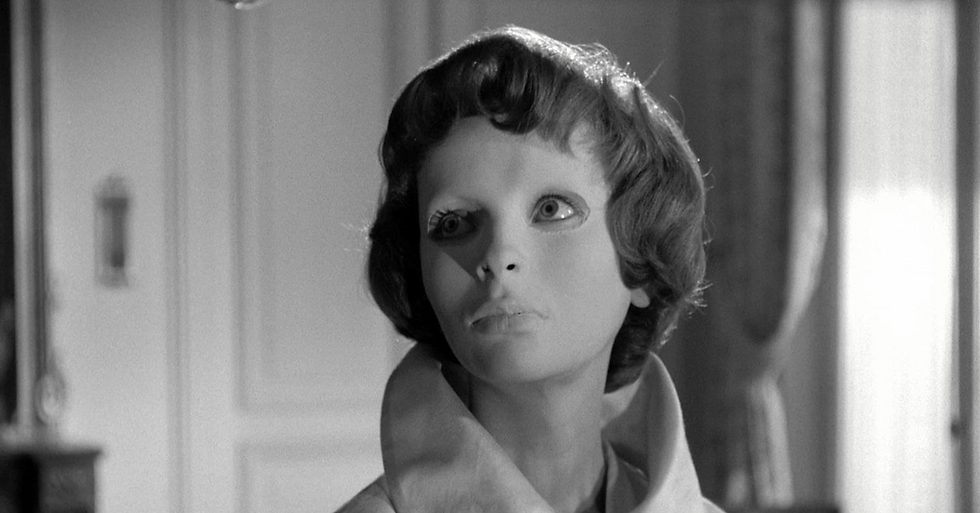Eyes Without a Face

In a world obsessed with beauty and the ever-evolving pursuit of aesthetic perfection, Georges Franju’s “Eyes Without a Face” (Les Yeux Sans Visage) leaves an unsettling and indelible mark.
This slow-burn horror film, steeped in poetic realism and surrealism, doesn’t only comment on plastic surgery but exposes the terrifying lengths to which human ambition and vanity can drive us.
A stark meditation on creation, hubris, and the illusion of physical perfection, the film remains eerily relevant, touching on themes of medical ethics, identity, and the consequences of unauthorised scientific experimentation.

With a muted, almost dreamlike style, “Eyes Without a Face” stands apart from the traditional horror of its era. Its stark black-and-white cinematography, filled with deep shadows and striking compositions, evokes the unsettling beauty of film noir.
Franju crafts a chilling atmosphere where the most horrifying elements are not the moments of graphic violence but the quiet, lingering sense of despair and moral decay.
The film opens with one of its most haunting sequences: Alida Valli, in a subdued yet deeply eerie performance, drives through the darkness to dispose of a body in the Seine. From the first frames, Franju establishes a world where horror is not just about the grotesque but about the void left by human indifference.
At the centre of the story is Dr. Génessier (a formidable Pierre Brasseur), a brilliant but deranged surgeon consumed by his desire to restore the beauty of his disfigured daughter, Christiane (the ethereal Edith Scob).

His cold, clinical approach to his victims - young women kidnapped by his assistant (Valli) and brought to his secluded lab outside Paris - mirrors a disturbing real-world history of unethical medical experimentation, particularly in the echoes of wartime atrocities, and the dehumanizing scientific progress is impossible to ignore.
Despite the film’s moments of explicit images - most notably the unsettling surgical sequence - its true terror lies in its characters’ moral void. Dr. Génessier is not a mad scientist in the traditional sense; his sickness comes from his unwavering belief that his actions are justified.
His daughter, trapped in a porcelain-like mask, becomes a ghostly figure of loss and identity crisis, a victim of both fate and her father’s relentless ambition. Her isolation mirrors the psychological struggle of those who undergo radical medical procedures, grappling with a body that no longer feels like their own.

“Eyes Without a Face” forces us to confront a deeply unsettling question: What happens when the human body becomes another material to be shaped, altered, and manipulated?
Upon its release in 1960, “Eyes Without a Face” was met with a divided reception. While some critics praised its eerie beauty and poetic horror, others were repulsed by its graphic contents, which proved shocking for audiences of the time.
Over time, however, “Eyes Without a Face” has been reassessed as a landmark in horror cinema, influencing filmmakers like John Carpenter, Pedro Almodóvar, and Guillermo del Toro. Its haunting imagery - especially Christiane’s expressionless mask - has become iconic, echoed in everything from slasher films to modern body horror.
The film’s meditation on identity, ethics, and obsession continues to resonate, proving that true horror lies not in the grotesque but in the human capacity for destruction in the name of beauty and progress.

Franju’s film is a gothic-horror story, a tragic fable, and a critique of scientific overreach all at once. Its surreal, nightmarish quality lingers long after the credits roll, challenging audiences to find meaning in its unanswered questions.
Today, as we continue to push the boundaries of medicine and aesthetics, the film’s warnings feel more urgent than ever.
“Eyes Without a Face” is not just a story about a disfigured girl or a mad scientist - it is about the price we pay for perfection and the horrors we ignore in its pursuit.
Comments